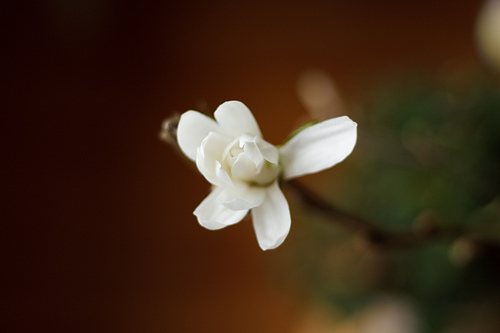This short poem illustrates Tim’s double-voice as both a gay and deeply religious poet. As Bryan Waterman observes, “A number of signifiers [in the poem] resonate with a Mormon audience: God’s ’still small voice’” “a favorite Primary phrase” with considerable cache in the Church’s pedagogical culture. Additionally, we have “the ‘vision of that tree’ protected by ‘cherubim and a flaming sword,’ meaning the Tree of Life in the Garden of Eden,” though Tim’s language recalls a) the prominent visions of Mormon history, specifically Lehi’s dream, and b) the role this Tree and the cherubim charged to protect it play in the LDS temple endowment ritual, which, in Brigham Young’s words, is “to receive all those ordinances in the House of the Lord, which are necessary for you, after you have departed this life, to enable you to walk back to the presence of the Father, passing the angels who stand as sentinels [before the Tree of Life], being able to give them the key words, the signs and tokens, pertaining to the holy Priesthood, and gain your eternal exaltation in spite of earth and hell.”
That the poet rejects the merit of such institutionally-mediated spirituality is suggested by the poem’s negatives (four nots, two nors) and the image of the “lopped-off branch,” which, Waterman suggests, not only “brings to mind New Testament imagery, but also the allegory of the olive tree in Jacob 5 in the Book of Mormon.” Here the poet seems to engage Zenos’ figuration of the House of Israel in terms of the allegorical pruning/dissemination process: healthy and diseased branches (lineages) are cut off of the main tree (parent lineage) and scattered throughout the vineyard (racial/ethnic diaspora) where they’re grafted into other trees in order to preserve the branches’ potential to bear fruit (inter-ethnic assimilation to the end of salvation).
Yet the poet also asserts a revision of this schema in his “recollect[ion],” which, he admits, is really a failure to recollect—or at least to recollect properly, i.e., in a way sanctioned by the residual Mormonism he engages again and again in his work. This revision is evident in the idea that, even though he has “lop[ped]” himself off from the religion’s hierarchical network of eternal-life-granting rituals by openly pursuing a homosexual lifestyle (his “lust”), he still stands in a shadow of that Tree, neither dead nor fully alive without the communion wrought through some degree of fellowship–even if it’s only textual fellowship and even if he’s only wagging his “flower[ing]” “branch” at naysayers–with the network and “love” that Tree represents.
Waterman points out that “the tension between the two voices” competing for our attention here—the gay voice and the Mormon voice—”accounts for [the poem’s] vitality” (something I’ve really only touched upon). That is, as each of Tim’s identities brushes against and overlaps the other, the text becomes increasingly and fruitfully complex, revealing an intricate layering of tones and metaphors that would be incomplete without due consideration of Tim’s multiple selves, including—perhaps in this case, especially—his Mormon identity and experience.

